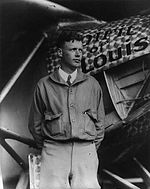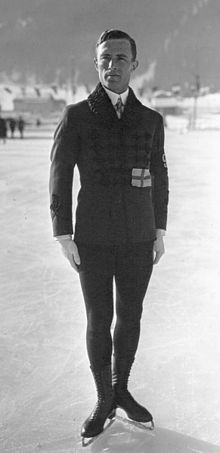The 1920s Portal
Silent films were popular in this decade, with the highest-grossing film of this decade being either the American silent epic adventure- drama film Ben-Hur: A Tale of the Christ or the American silent war drama film The Big Parade, depending on the metrics used. Sinclair Lewis was a popular author in the United States in the 1920s, with his books Main Street and Elmer Gantry becoming best-sellers. Best-selling books outside the US included the Czech book The Good Soldier Švejk, which sold 20 million copies. Songs of this decade included " Mack the Knife" and " Tiptoe Through the Tulips". During the 1920s, the world population increased from 1.87 to 2.05 billion, with approximately 700 million births and 525 million deaths in total. ( Full article...) Selected article -Subway Sadie is a 1926 American silent comedy-drama film directed by Alfred Santell. Adapted from Mildred Cram's 1925 short story "Sadie of the Desert", the film focuses on a relationship between New York salesgirl Sadie Hermann ( Dorothy Mackaill) and subway guard Herb McCarthy ( Jack Mulhall), who meet on the subway and become engaged. However, after Sadie receives a promotion, she must choose between her new job and marrying Herb. The cast also includes Charles Murray, Peggy Shaw, Gaston Glass, and Bernard Randall. The film began production in May 1926. Arthur Edeson served as cinematographer, shooting around Central Park in areas like casinos and nightclubs. Distributed by First National Pictures, the film premiered in New York on September 12, 1926. Many publications wrote positively of the film, praising its acting and Santell's direction. Today, it remains unknown if a print of Subway Sadie has survived. ( Full article...)Featured picture A portrait of Lillian Gish from 1921. Gish was one of the first female movie stars, called "The First Lady of American Cinema", starting in 1912 and continuing to appear in films until 1987. The American Film Institute named Gish 17th among the greatest female stars of all time and awarded her a Life Achievement Award, making her the only recipient who was a major figure in the silent era. Remarkably, she never won an Academy Award for her work, although she did receive a Special Academy Award in 1971. Did you know...
Related portalsSelected biography -
Gillis Emanuel Grafström (7 June 1893 – 14 April 1938) was a Swedish
figure skater. He was born in
Stockholm,
Sweden. He won three successive Olympic gold medals in Men's Figure Skating (1920, 1924, 1928) as well as an Olympic silver medal in the same event in 1932, and three
World Championships (1922, 1924, 1929). He and
Eddie Eagan are the only athletes to have won a
gold medal at both the
Summer and
Winter Olympic Games. Grafström has the further distinction of being the only person to have won an individual gold medal in both the Summer (1920) and Winter Olympics (1924, 1928), although Eagan remains the only one to have managed the feat in different disciplines. Grafström is one of the few
athletes who have competed in both the Summer and Winter Olympic games. He is one of the
oldest figure skating Olympic champions. (
Full article...)
TopicsWikiProjects
List articlesMore Did you know (auto generated)
CategoriesGeneral imagesThe following are images from various 1920s-related articles on Wikipedia.
Recognized content
Associated WikimediaThe following Wikimedia Foundation sister projects provide more on this subject:
Discover Wikipedia using
portals |
The 1920s Portal
Silent films were popular in this decade, with the highest-grossing film of this decade being either the American silent epic adventure- drama film Ben-Hur: A Tale of the Christ or the American silent war drama film The Big Parade, depending on the metrics used. Sinclair Lewis was a popular author in the United States in the 1920s, with his books Main Street and Elmer Gantry becoming best-sellers. Best-selling books outside the US included the Czech book The Good Soldier Švejk, which sold 20 million copies. Songs of this decade included " Mack the Knife" and " Tiptoe Through the Tulips". During the 1920s, the world population increased from 1.87 to 2.05 billion, with approximately 700 million births and 525 million deaths in total. ( Full article...) Selected article -Subway Sadie is a 1926 American silent comedy-drama film directed by Alfred Santell. Adapted from Mildred Cram's 1925 short story "Sadie of the Desert", the film focuses on a relationship between New York salesgirl Sadie Hermann ( Dorothy Mackaill) and subway guard Herb McCarthy ( Jack Mulhall), who meet on the subway and become engaged. However, after Sadie receives a promotion, she must choose between her new job and marrying Herb. The cast also includes Charles Murray, Peggy Shaw, Gaston Glass, and Bernard Randall. The film began production in May 1926. Arthur Edeson served as cinematographer, shooting around Central Park in areas like casinos and nightclubs. Distributed by First National Pictures, the film premiered in New York on September 12, 1926. Many publications wrote positively of the film, praising its acting and Santell's direction. Today, it remains unknown if a print of Subway Sadie has survived. ( Full article...)Featured picture A portrait of Lillian Gish from 1921. Gish was one of the first female movie stars, called "The First Lady of American Cinema", starting in 1912 and continuing to appear in films until 1987. The American Film Institute named Gish 17th among the greatest female stars of all time and awarded her a Life Achievement Award, making her the only recipient who was a major figure in the silent era. Remarkably, she never won an Academy Award for her work, although she did receive a Special Academy Award in 1971. Did you know...
Related portalsSelected biography -
Gillis Emanuel Grafström (7 June 1893 – 14 April 1938) was a Swedish
figure skater. He was born in
Stockholm,
Sweden. He won three successive Olympic gold medals in Men's Figure Skating (1920, 1924, 1928) as well as an Olympic silver medal in the same event in 1932, and three
World Championships (1922, 1924, 1929). He and
Eddie Eagan are the only athletes to have won a
gold medal at both the
Summer and
Winter Olympic Games. Grafström has the further distinction of being the only person to have won an individual gold medal in both the Summer (1920) and Winter Olympics (1924, 1928), although Eagan remains the only one to have managed the feat in different disciplines. Grafström is one of the few
athletes who have competed in both the Summer and Winter Olympic games. He is one of the
oldest figure skating Olympic champions. (
Full article...)
TopicsWikiProjects
List articlesMore Did you know (auto generated)
CategoriesGeneral imagesThe following are images from various 1920s-related articles on Wikipedia.
Recognized content
Associated WikimediaThe following Wikimedia Foundation sister projects provide more on this subject:
Discover Wikipedia using
portals |




















































